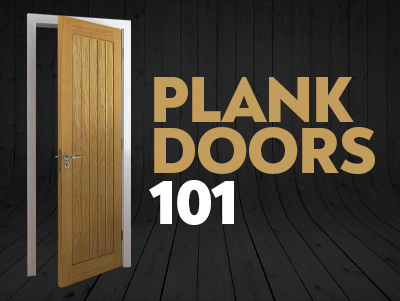
Not all types are wood are suited to every purpose, so it's essential you choose the right wood for the job. We've ranked different types of wood according to their Janka hardness rating and listed some of their most common uses to help you find the type you need.
The Janka hardness test is a reliable indicator of the wood's resistance to wear and tear. Most, if not all, woods used in construction, woodworking, and for just about any other purpose you can think of have undergone the test.
Find out more about the test, how wood is graded, and how the results can help you decide which wood to purchase.
How The Janka Test Works
The Janka hardness test and the system of the rating was created by Gabriel Janka. The Austrian immigrant to the USA worked for the U.S. Department of Agriculture's Forest Products Lab in the early 20th century.
The test measures how much force is needed to drive an 11.28mm steel ball halfway through a sample of wood. The force is measured in newtons (N). One newton is the force needed to accelerate a one-kilogram object one metre per second.
The test requires a solid plank of wood that is unfinished and free of knots. The wood must also have a moisture content of approximately 12%. The steel ball is placed on the plank before accurately measured force is applied to the ball until it leaves a 200 sq.mm indentation in the wood. The test is done again on another part of the plank before the results are averaged.
Janka Hardness Ratings
The various Janka hardness ratings include the following categories:
- Very Soft
- Soft
- Firm
- Rather Hard
- Hard
- Very Hard
- Extremely Hard
- Exceedingly Hard
Although the different types of wood in each grade are better suited to certain uses than those in other grades, don't be tempted to think that the uses of each wood are limited by the wood's Janka rating.
For example, Snakewood (Brosimum guianense), which has a Janka hardness of 17,000 N is rated as exceedingly hard. Its hardness makes it a popular choice for making tools with wooden components, while its snakeskin-like grain means it is often used in decorative pieces. Its durability and beauty also see it used to make musical instruments.
Apricot wood (Prunus armeniaca) has a Janka hardness of 6,200 N, so it is rated as rather hard. It has less than half the hardness rating of Snakewood, and yet it also is used to make tools and musical instruments, and it is used for decorative purposes. Obviously, the type of tools and instruments it is used for would differ to those for which Snakewood is used.
Let's take a closer look at each of the Janka hardness ratings in more detail:
Very Soft (300 N – 2,899 N)
Woods with a Janka hardness of between 300 N and 2,899 N are very soft, with the softest of them being Balsa (Ochroma pyramidale). Balsa wood is commonly used to make buoys, toys, and surfboards, as well as light wooden aeroplanes such as the De Havilland Mosquito, used during World War II.
A few other woods in the category include:
- European Silver Fir (Albies alba) – 1,420 N – Construction and papermaking
- Yellow Buckeye (Aesculus flava) – 1,560 N – Furniture, crates, and music instruments
- Cypress (Taxodium distichum) – 2,270 N – Exterior lumber and in boatmaking
Soft (2,900 – 4,999)
Although woods with a Janka hardness between 2,900 N and 4,999 N are soft, they are still resistant to damage. Some wood in the category can be difficult to work with, and there are a few known for snapping when worked on with incorrect tools. Among the wood in this category are:
- Lacewood (Panopsis rubescens) – 3,160 N – Decoration, cabinetry, and musical instruments
- Aromatic Red Cedar (Juniperus virginiana) – 4000 N – Fencing, small objects, decoration
- Teak (Tectona grandis) – 4,740 N – Boatmaking, decoration, and furniture
Firm (5000 – 5,899)
Several types of wood classed as firm, i.e. having a Janka hardness between 5,000 and 5,899, are popular options for flooring. They can withstand general wear and tear without being so hard that working with them requires specialised tools. Examples include:
- American Beech (Fagus grandifolia) – 5,780 N – Flooring, construction and decoration
- White Ash (Fraxinus Americana) – 5,870 N – Flooring and baseball bats
- Black Locust (Robinia pseudoacacia) – 7,560 N – Flooring, boatmaking and fencing
Rather Hard (5,900 N – 7,899 N)
Various types of wood rated hard by Janka hardness testing are also good choices for flooring. Some are used for musical instruments, furniture, and tools. One example is (also see Apricot's mention above):
- Black Locust (Robinia pseudoacacia) – 7,560 N – Flooring, fencing and boatmaking
Hard (7,900 N – 8,559 N)
Construction, flooring, furniture, musical instruments, and toolmaking are some of the uses for wood with a Janka hardness of between 7,900 N and 8,559 N. A couple of examples are:
- Zebrawood (Microberlinia brazzavillensis) – 8,160 N – Decoration, toolmaking and boatmaking
- Jarrah (Eucalyptus marginata) – 8,270 N – Flooring, construction and decoration
Very Hard (8,560 N – 14,299 N)
Woods found to be very hard by the Janka test are surprisingly versatile. They can be used for jobs that require wood that can withstand hard knocks as well as the elements, such as pallets, flooring, construction, and external lumber. They also can be used for cabinetry, small objects, decorative purposes, and musical instruments. One example is:
- Jatoba (Hymanaea courbaril) – 11,950 N – Flooring, furniture, cabinetry and boatmaking
Extremely Hard (14,300 N – 16,419 N)
Construction, external lumber, firewood, flooring, and railroad sleepers are some of the uses of some types of wood rated extremely hard. The wood of this hardness usually requires specialised tools. Among the examples are:
- Camaru (Dipteryx odorata) – 14,800 N – Cabinetry, construction, flooring and furniture
- Grey Ironbark (Eucalyptus paniculate) – 16,300 N – Archery bows, construction, railroad sleepers
Exceedingly Hard (16,420+ N)
With the exception of the hardest wood on the planet, Australian Buloke, exceedingly hardwoods are seldom used for flooring. Most are used for making tools, and some are also popular for use in construction, making furniture, and as railroad sleepers. One example is:
- Australian Buloke (Allocasuarina luehmannii) – 22,500 N – Toolmaking, flooring and furniture
We hope you now have a better understanding of wood hardness, how the rating system applies and what wood will best suit your needs.
Related Articles
Category
Doors & WindowsPosted On
9th January 2025



